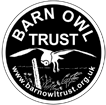Barn Owls in autumn
When do juvenile Barn Owls disperse?
- By 11 weeks, many young Barn Owls have made their first prey capture and some have already started to disperse.
- By 14 weeks, fledglings have usually started to disperse (move away from their parents’ home range) singly.
- Depending on when the eggs are laid, dispersal can be as early as late June or as late as December, but typically August-November.
What direction do juvenile Barn Owls go?
Dispersal direction appears to be completely random. However, at local level dispersal direction is probably influenced by landscape. It seems probable that they avoid flying over obstacles such as mountains. However, some must fly out to sea as individuals occasionally turn up on oil rigs and ships. Radio tracking studies have shown that dispersal usually consists of a series of moves between temporary roost sites. These are occupied for between 3 and 15 weeks and are up to 1 km apart.
How far do juvenile Barn Owls disperse?
The ringing of nestling Barn Owls and the subsequent recovery of ringed birds has provided a wealth of information on dispersal. Although ring recovery data is largely based on birds that have died, it does provide an insight into what happened while they were alive.
The average dispersal distance is 7.8 km (4.8 miles). The majority move less than 10 km and a small minority move a very long way indeed. Unusual movements include Devon to Yorkshire, Germany to west Cornwall and the Isle of Wight to Normandy.
In Britain, dispersal distance is not affected by annual fluctuations in food supply, but in mainland Europe, Barn Owls disperse further in years when food is less abundant.
How long does Barn Owl dispersal last?
The dispersal period is usually over by late November. There are several factors that cause young owls to stay or move on:
- Food supply.
- The availability of dry roost sites (either undisturbed, or where they can stay out of sight).
- The presence of an unpaired Barn Owl of the opposite sex.
Backpack radio tag fitted to a juvenile Barn Owl
Nestling Barn Owl being BTO ringed
Birds that haven’t established a permanent home range by this time are probably forced to do so. Reduced prey availability and deteriorating weather make survival the highest priority. Barn Owls that stay in one place and get to know the landscape in great detail stand a better chance of survival than those which keep moving on. This is due, in part, to the sensory limitations of nocturnal foraging.
It is a sad fact that juveniles in dispersal are more likely to die of starvation or injury than establish a home range. There are several factors working against them:
- Inexperience in finding and catching food.
- Unfamiliarity with the landscape.
- Deteriorating weather conditions.
- The increased likelihood of encountering man-made hazards; major roads, power lines, drinking troughs.
More Barn Owls die in dispersal than at any other time and this has more effect on Barn Owl numbers than any other stage of the life-cycle. In other words, juvenile survival rate determines population size more than clutch size, hatching success, nest mortality or adult survival rate. Therefore, understanding dispersal and why so many young Barn Owls die is incredibly important.
Once a Barn Owl has settled into a home range it faces the challenge of winter. Read about Barn Owls in winter.
Major roads are a significant hazard to Barn Owls (Sandy Osborough)
The Brood of 101
The Barn Owl Trust’s biggest-ever research project (Barn Owls and Major Roads) included a detailed investigation into dispersal behaviour and mortality. Within the 109-page report we produced a 2-page section called The Brood Of 101 which, if you are really interested in Barn Owl dispersal and mortality, is well worth reading. The real enthusiast may also like to read Chapter 8 of “Barn Owls and Major Roads: Results and Recommendations from a 15-year Research Project”.
Other relevant pages
- The authors’ manuscript of a collaborative juvenile dispersal radio-tracking paper is at “Ruiz et al (2022), Juvenile Barn Owl Tyto alba alba dispersal: roost site selection in relation to landscape features — a radio tracking study“. The Version of Record of this manuscript is available in Bird Study (January 25th 2022): https://www.tandfonline.com/doi/full/10.1080/00063657.2021.2021141
- Whether or not the owls lay eggs depends mainly on food supply. Take a look at hunting and feeding.
- The next stage in the process is winter survival. Read about Barn Owls in winter.
- There is more information about this topic in the Barn Owl Conservation Handbook.


![A Barn Owl with a radio tag Mother barn owl with nestlings and eggs [Kevin Keatly]](https://www.barnowltrust.org.uk/wp-content/uploads/barn_owl_radio_tag_back_pack.jpg)

